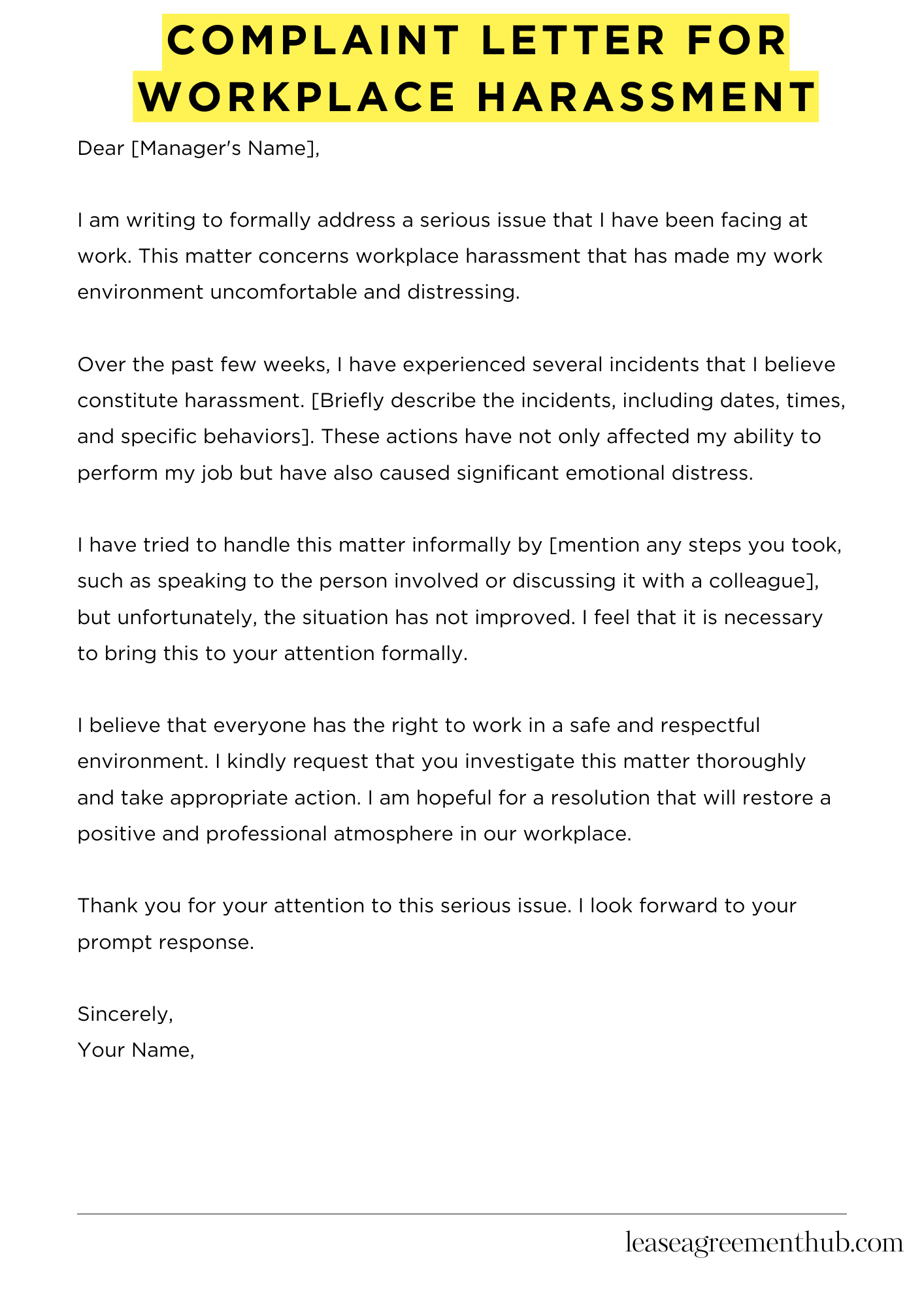A complaint letter for workplace harassment is a formal document that an employee writes to report inappropriate behavior or actions in the workplace. Its purpose is to clearly communicate the issues faced and to seek resolution from management or human resources. This letter serves as an official record of the complaint and can help initiate necessary actions to address the situation.
In this article, we will provide templates and examples of complaint letters for workplace harassment. These samples will guide you in writing your own letter, making the process easier and more efficient. Whether you need to address a specific incident or a pattern of behavior, our examples will help you express your concerns clearly.
Writing a complaint letter can feel daunting, but it is an important step in standing up against harassment. With our templates, you can focus on the details of your experience while ensuring your message is conveyed effectively. Let’s get started on crafting a letter that will help you seek the support you need.
Complaint Letter For Workplace Harassment
[Your Name]
[Your Address]
[City, State, Zip Code]
[Email Address]
[Phone Number]
[Date]
[Manager’s Name]
[Company’s Name]
[Company’s Address]
[City, State, Zip Code]
Dear [Manager’s Name],
I am writing to formally address a serious issue that I have been facing at work. This matter concerns workplace harassment that has made my work environment uncomfortable and distressing.
Over the past few weeks, I have experienced several incidents that I believe constitute harassment. [Briefly describe the incidents, including dates, times, and specific behaviors]. These actions have not only affected my ability to perform my job but have also caused significant emotional distress.
I have tried to handle this matter informally by [mention any steps you took, such as speaking to the person involved or discussing it with a colleague], but unfortunately, the situation has not improved. I feel that it is necessary to bring this to your attention formally.
I believe that everyone has the right to work in a safe and respectful environment. I kindly request that you investigate this matter thoroughly and take appropriate action. I am hopeful for a resolution that will restore a positive and professional atmosphere in our workplace.
Thank you for your attention to this serious issue. I look forward to your prompt response.
Sincerely,
Your Name,

How to Write Complaint Letter For Workplace Harassment
Understanding Workplace Harassment
Workplace harassment is any unwelcome behavior that creates a hostile environment. It can be verbal, physical, or even visual. Recognizing harassment is the first step in addressing it. If you feel uncomfortable or threatened at work, it is important to take action. Writing a complaint letter is a formal way to report the issue.
Gathering Evidence
Before writing your letter, collect all relevant information. Document specific incidents, including dates, times, and locations. Note the names of witnesses, if any. This evidence will strengthen your complaint. The more details you provide, the clearer your case will be. Keep your records organized and factual.
Structuring Your Complaint Letter
Your letter should have a clear structure. Start with your contact information at the top, followed by the date. Then, include the recipient’s details. Begin with a formal greeting. In the body, explain the situation concisely. Use short paragraphs to enhance readability. Be factual and avoid emotional language. End with a closing statement and your signature.
What to Include in the Letter
Make sure to include key elements in your letter. State the nature of the harassment clearly. Describe how it has affected you and your work. Mention any previous attempts to resolve the issue. Request a specific action, such as an investigation or a meeting. It is important to remain professional throughout your writing.
Following Up
After sending your complaint letter, it is essential to follow up. Keep a copy of your letter for your records. If you do not receive a response within a reasonable time, reach out again. Persistence shows that you take the matter seriously. Remember, you have the right to work in a safe environment, and taking action is a vital step towards ensuring that.
Related: